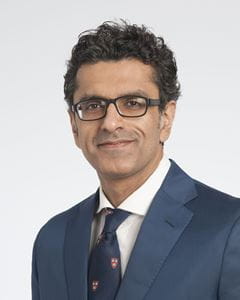INDIANAPOLIS— In a novel analysis of 9,153 first-year fellows and 243 program directors, a team of researchers led by Ankur Kalra, MD of Indiana University School of Medicine have uncovered compelling trends in the demographics of cardiovascular disease fellowship programs. Their findings, published recently in JACC: Advances, underscore the importance of placing faculty from marginalized and minoritized groups in leadership roles of these programs.
“These findings are very interesting and lay ground for future research to promote diversity, equity and inclusion in fellowship recruitment,” said Kalra, who is an associate professor of clinical medicine and medical director of Interventional Cardiology Quality and Innovation at the Cardiovascular Institute.
In the study, which drew on data from the Association of American Medical Colleges from 2010 to 2019, Kalra and his team discovered a significant association between the race of the program director and the demographics of the fellows.
“If the program director is white, then the likelihood of a mostly-white fellowship class is higher,” said Kalra. “If the director is Black, then it’s likely there are more Black fellows in the program. This was true for every race.”
Additionally, Kalra and his team analyzed overall trends in the shifting demographics of cardiovascular disease fellowship classes during the specified time period. They found that the percentage of cardiovascular disease fellows who are women has increased significantly, while the percentage of Asian fellows has declined over time.
“It’s possible that all of these same trends could be observed in other specialties, so further research is warranted,” Kalra said. He is currently working on a similar analysis of internal medicine residency programs.
Kalra said he hopes this data demonstrates to institution and program leadership that they must build diverse programs in order to flourish in an increasingly diverse world.
“Fellowship recruitment is important for any academic health center. These fellows become the specialists of the future,” Kalra said. “Diverse specialists are vital in order to better reflect changing population of the United States.”
###
IU School of Medicine is the largest medical school in the U.S. and is annually ranked among the top medical schools in the nation by U.S. News & World Report. The school offers high-quality medical education, access to leading medical research and rich campus life in nine Indiana cities, including rural and urban locations consistently recognized for livability.




